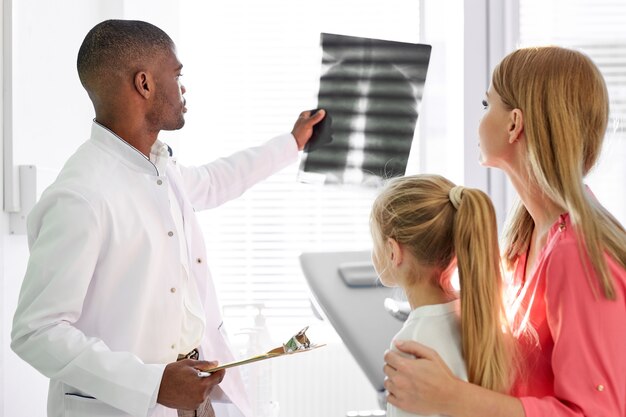Understanding Osteoporosis: What You Need to Know
Imagine waking up one morning only to discover that your bones have mysteriously become more fragile, increasing the risk of fractures. Sounds like a distant nightmare, doesn't it? Yet, this is the reality for millions of individuals worldwide living with osteoporosis. This condition often lurks quietly until a sudden fracture makes its presence painfully known. But how exactly does one get osteoporosis, and what can you do to understand this common yet elusive condition better? Let's dive deep into the factors and insights to inform and empower you.
What is Osteoporosis?
Osteoporosis is a bone disease characterized by a decrease in bone mass and density, leading to bones that are more fragile and susceptible to fractures. Often referred to as the "silent disease," osteoporosis can progress without any evident symptoms until a fracture occurs. These fractures typically happen in the hip, spine, or wrist, significantly impacting an individual's mobility and quality of life.
How Does Osteoporosis Develop?
Bone Remodeling: A Delicate Balance
Bones are living tissues that constantly undergo remodeling, a balanced process involving bone tissue breakdown (resorption) and new bone formation. In youth, bone formation surpasses resorption, enabling growth and increased density. However, around the age of 30, bone mass typically peaks, and the balance may gradually tilt towards resorption, especially if certain risk factors come into play.
Risk Factors for Osteoporosis
While osteoporosis can affect anyone, certain elements increase the likelihood of its onset:
- Age: As people age, bone density naturally decreases, making older adults more susceptible to osteoporosis.
- Gender: Women, particularly those post-menopause, face a higher risk due to lower estrogen levels, which are protective against bone loss.
- Genetics: Family history can influence bone density, suggesting a hereditary component to osteoporosis risk.
- Body Frame Size: Small body frames may mean less bone mass to draw from as bone density decreases with age.
- Dietary Habits: Inadequate calcium and vitamin D intake can impair bone health.
- Lifestyle Choices: Smoking and excessive alcohol consumption can increase osteoporosis risk.
- Medical Conditions: Conditions such as rheumatoid arthritis or hormonal disorders can affect bone health.
- Medications: Long-term use of corticosteroids and other medications can affect bone density.
The Role of Hormones
Estrogen and testosterone play crucial roles in bone density. A decrease in these hormones, especially during menopause for women, accelerates bone loss. Therefore, women are particularly vulnerable to developing osteoporosis during and after menopause.
Osteoporosis Symptoms: Spotting the Signs
Osteoporosis often goes undiagnosed until a bone fracture occurs. However, early signs may include:
- Back Pain: Caused by a fractured or collapsed vertebra.
- Decreased Height Over Time: Often a result of bone loss in the spine.
- A Stooped Posture: This can result from weakened spinal bones.
Related Subtopics: Understanding Bone Health
Importance of Nutrients
Your dietary choices significantly impact bone health:
- Calcium: Crucial for bone health, calcium is found in dairy products, leafy greens, and fortified foods.
- Vitamin D: Helps your body absorb calcium effectively. Sun exposure, fatty fish, and fortified foods are good sources of vitamin D.
- Protein: Essential for bone repair and growth. Sources include poultry, fish, beans, and nuts.
Exercise and Bone Health
Engaging in regular physical activity is another vital way to maintain bone strength:
- Weight-Bearing Exercises: Activities like walking, jogging, and dancing can help build bone density.
- Strength Training: Lifting weights or resistance exercises also promote bone health.
- Balance and Flexibility Exercises: Yoga and Tai Chi can reduce the risk of falls and fractures.
Lifestyle and Bone Density
Certain lifestyle choices can support better bone health:
- Avoid Smoking: Smoking contributes to bone density loss.
- Limit Alcohol: Excessive alcohol consumption can hinder bone formation.
Empowering Knowledge for the Future
Understanding the importance of bone health and how osteoporosis develops empowers you to make informed choices. Strategies such as prioritizing a nutrient-rich diet, incorporating regular physical activity, and avoiding lifestyle risk factors can make a substantial difference in your overall bone health.
What Now? Key Takeaways
Remember, while osteoporosis can be elusive, knowledge is a powerful tool. Stay proactive about bone health with the right combination of diet, exercise, and lifestyle choices to fortify your bones against potential risks. By staying informed and making conscious health decisions, you equip yourself to lead a resilient and active life.
🔑 Key Takeaways for Bone Health:
- Age & Gender Matter: Age-related bone density loss is inevitable, with women especially at risk post-menopause. 🌟
- Balanced Diet: Ensure adequate calcium, vitamin D, and protein intake. 🍎
- Exercise Regularly: Engage in weight-bearing and strength-training exercises. 🏋️♀️
- Avoid Smoking & Limit Alcohol: Important lifestyle choices to protect bone health. 🚭
- Watch Medication & Conditions: Be aware of medical factors contributing to bone density loss. 💊
By integrating these insights into your daily life, you can take meaningful steps towards stronger, healthier bones and a reduced risk of osteoporosis. 🌿

Related Articles
- a Nurse Is Caring For a Client Who Has Osteoporosis.
- a Percutaneous Is Performed To Treat Osteoporosis Related Compression Fractures
- Can Alcohol Cause Osteoporosis
- Can I Do Pilates If I Have Osteoporosis
- Can I Reverse Osteoporosis
- Can Men Get Osteoporosis
- Can Osteoporosis Affect Teeth
- Can Osteoporosis Be Cured
- Can Osteoporosis Be Painful
- Can Osteoporosis Be Reversed